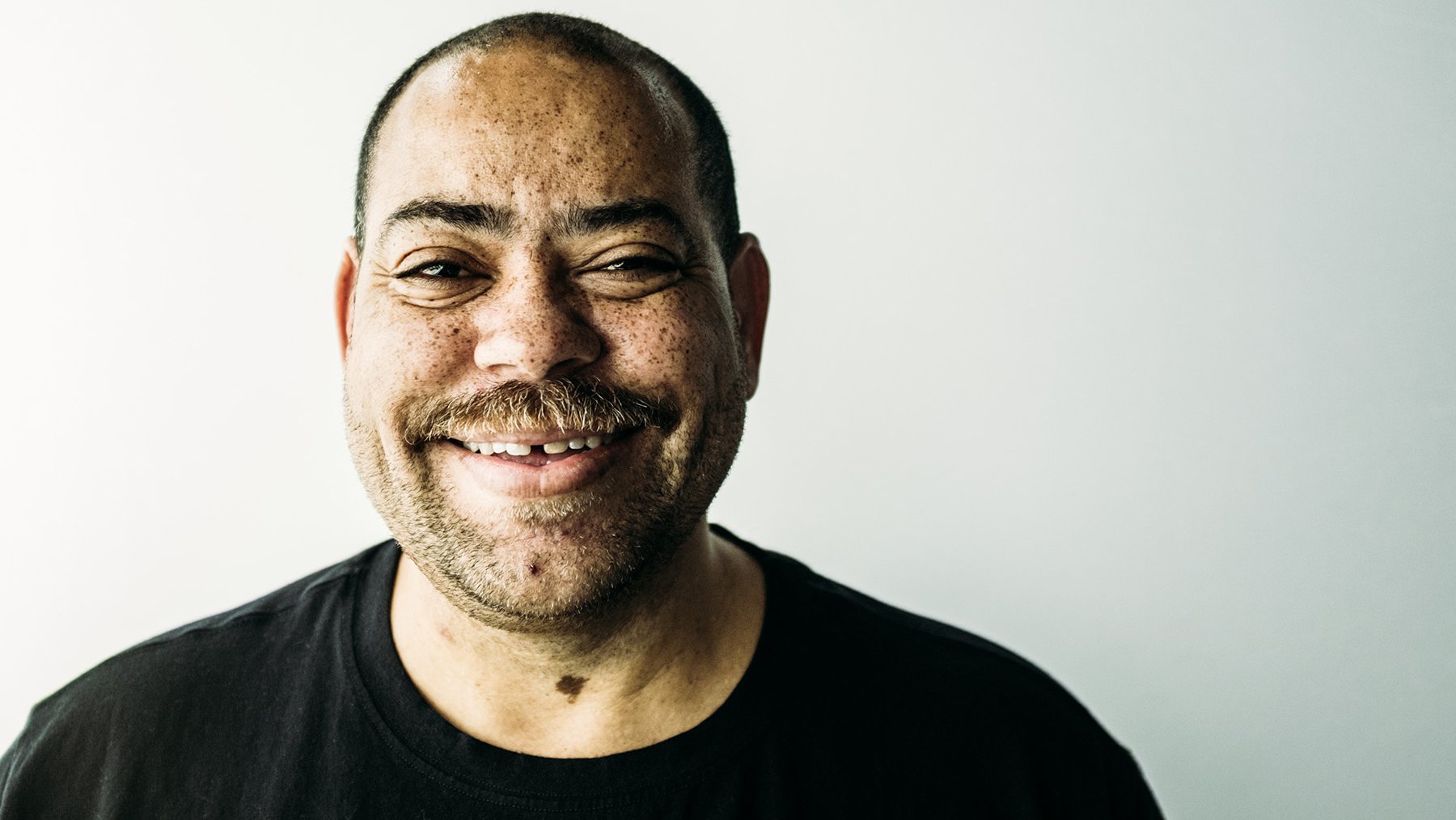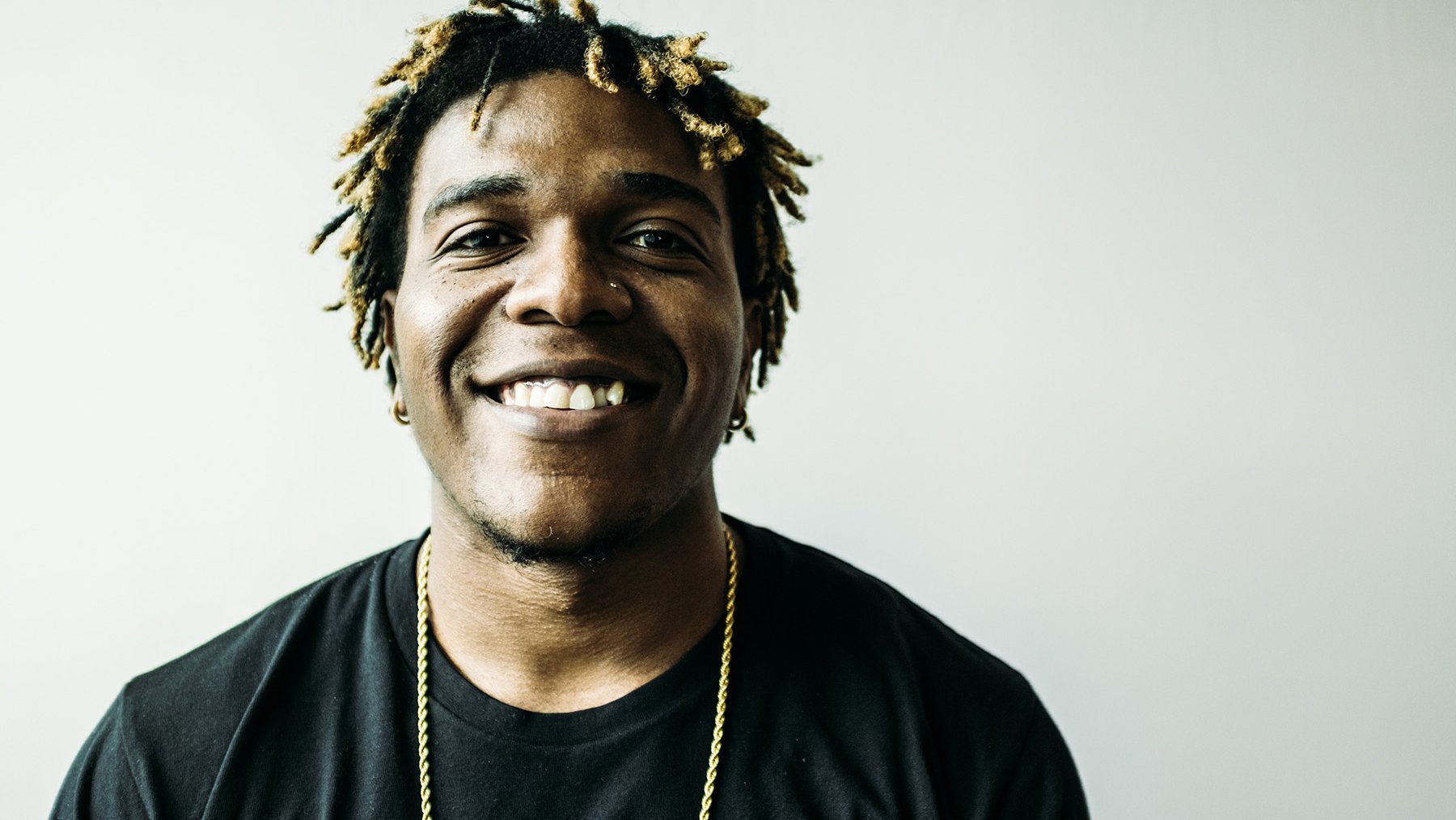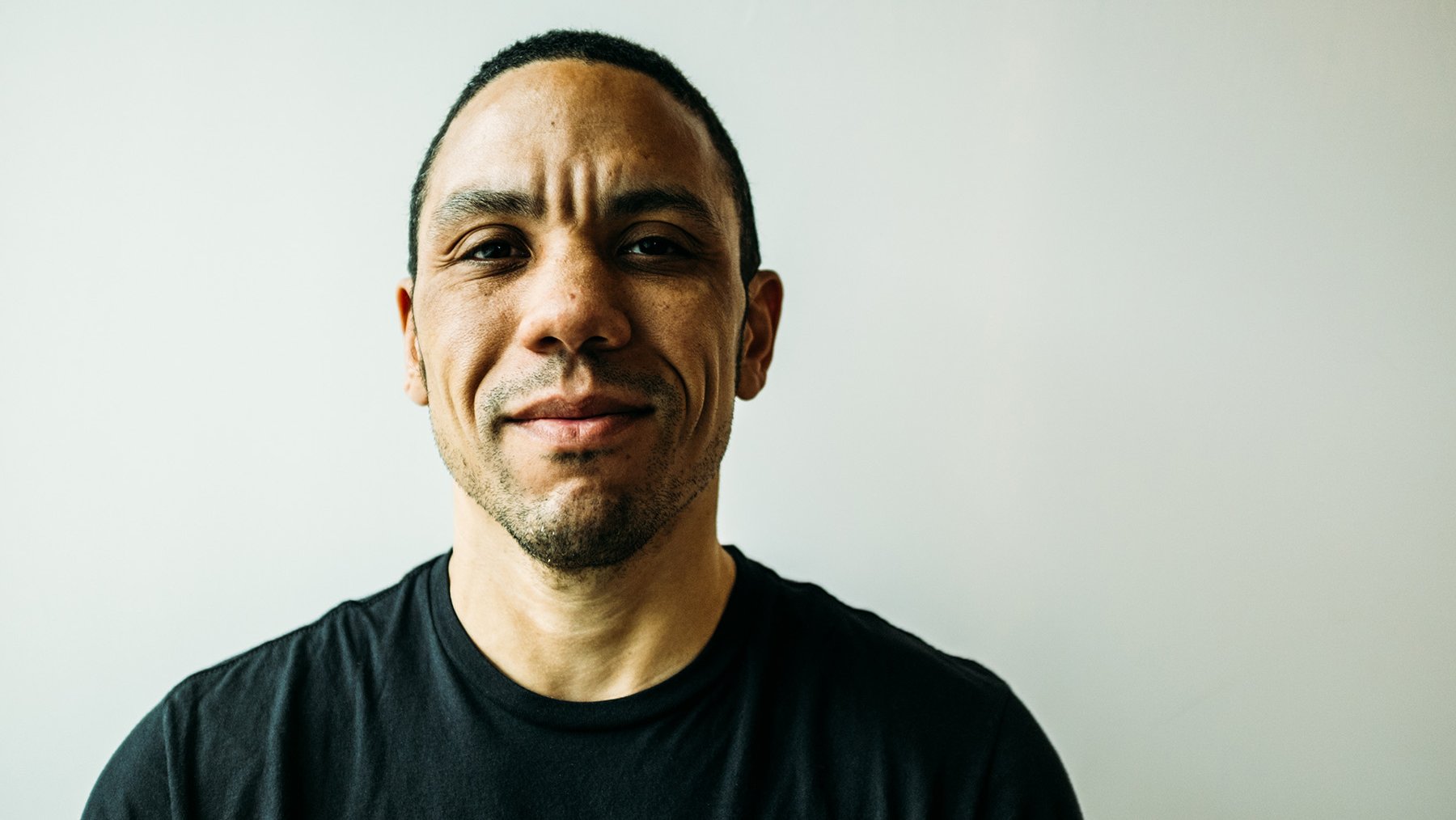Lee Tai-Young was Korea's first female lawyer and first female judge. Cecilia Grierson was the first woman to receive a medical degree in Argentina. And Ida B. Wells was a newspaper editor by age 25 and one of the founders of the NAACP. These are a few of the remarkable women you’ll meet in today’s Doodle celebrating International Women’s Day, one of several ways we’re raising awareness about the contributions of women, past and present, throughout Women’s History Month. We’re also supporting efforts to close the gender gap in tech and other fields. Read on for a look at what we’re doing to recognize women across media, culture, leadership and more this month.
Celebrating historical heroines
In today’s interactive slideshow Doodle, a young girl goes on an imaginary journey to meet 13 female trailblazers from throughout history. From a pilot in Egypt to a dancer in India, these women may not all be household names, but they’ve all made a unique mark on the world. In fact, all of them have been celebrated in a Doodle in the past, but often only in their countries of origin. Today, we’re sharing their stories worldwide.
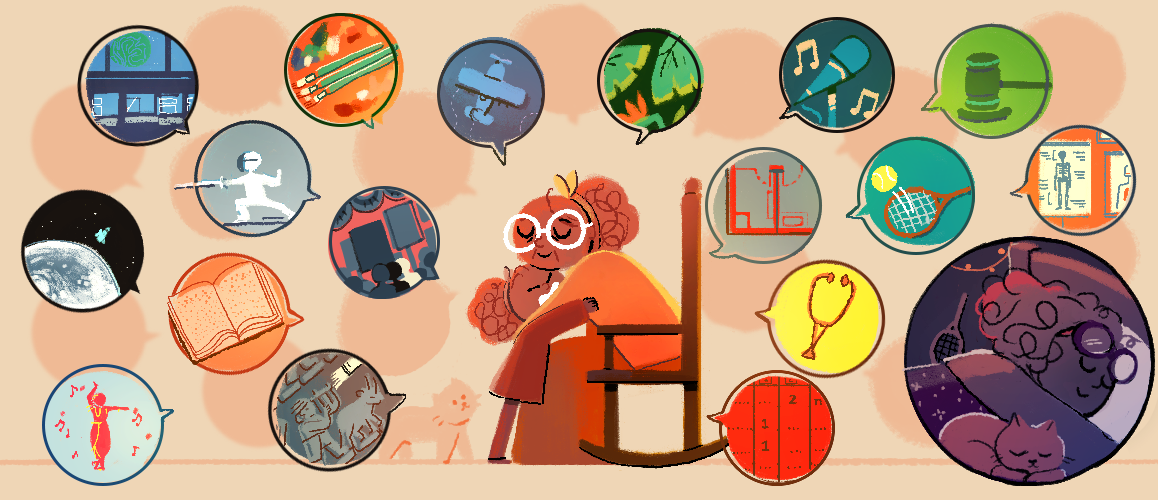
After your journey, learn more about all of the women in the Doodle in a new Spotlight Story from Google Arts & Culture. See the São Paulo Museum of Art, designed by Brazilian architect Lina Bo Bardi, or the Phoenician alphabet tablet with which Halet Cambel deciphered Hittite hieroglyphics. You can also find more exhibits on notable women from throughout history on our Women in Culture page. You might just meet a new heroine!
A day in the life of women astronauts, pilots and engineers with VR
Today’s Doodle introduces you to notable women of the past, but what about the women of today and tomorrow? With Expeditions, more than 2 million students have gone on 500+ virtual field trips to places like Machu Picchu and the International Space Station using Google Cardboard. Today we’re adding 40 new Expeditions to this collection, all focused on on the careers, adventures, and contributions of women.
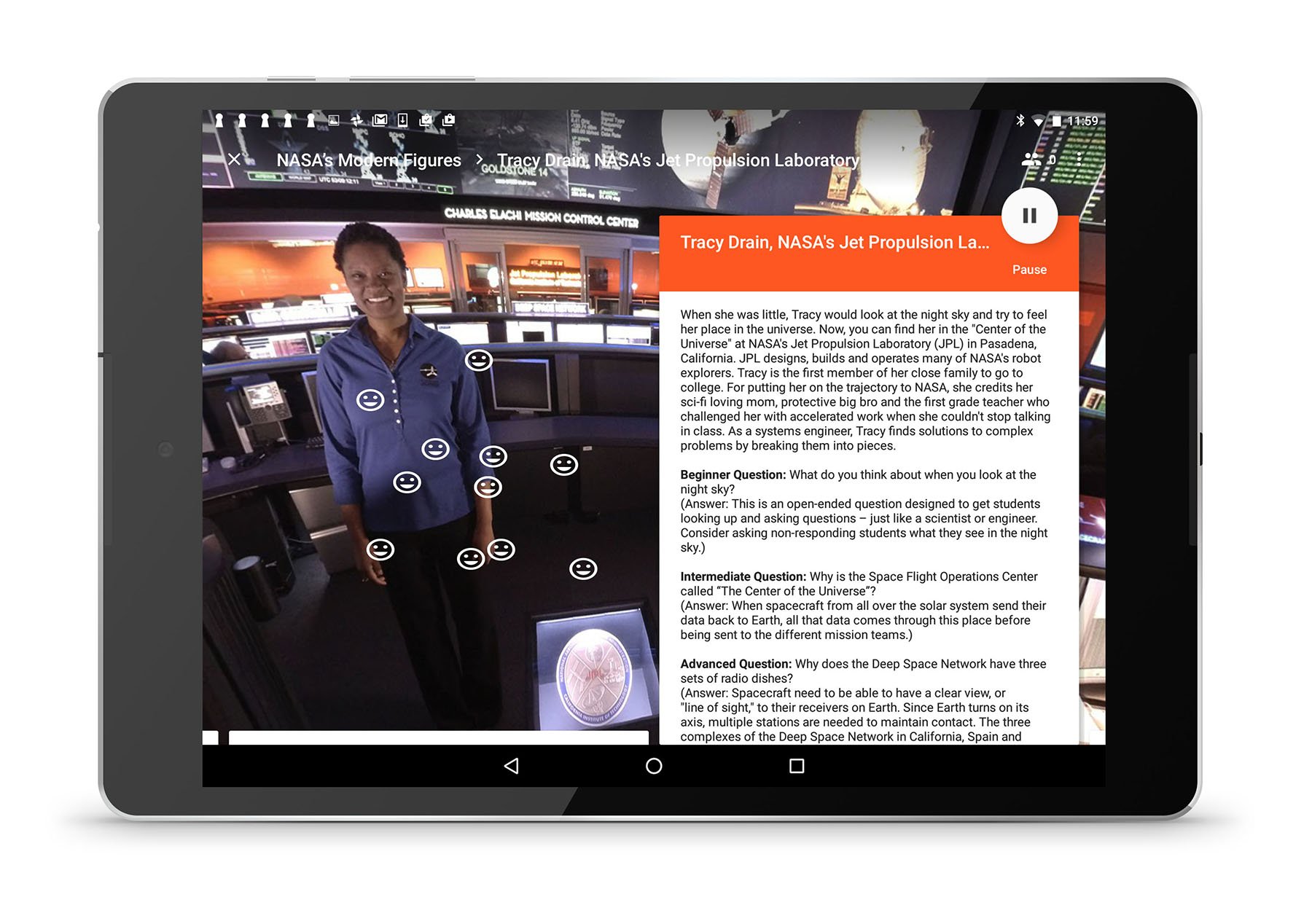
The new Expeditions highlight everyone from astronauts, airplane pilots, engineers and photographers to the female firefighters of the FDNY. They open a window into a typical day on the job—whether in a recording studio or a cockpit, explain the person’s backstory and reveal how she got to where she is today. Some also offer advice to students interested in pursuing a similar career. Download the app on iOS and Android to get started.
Recognizing inspirational women on YouTube
Rosie Rios, an inspiring woman in her own right as the 43rd Treasurer of the United States, led the efforts to put a woman on U.S. currency. That meant learning more about the hundreds of American women who made great contributions to the history of this country. Now she’s created a special playlist for YouTube Kids called “Super Women of Our Past” that introduces young people to some of these women, from Eleanor Roosevelt to Harriet Tubman to Grace Hopper. Watch with the YouTube Kids app. You can also find other, related playlists, like “Celebrate Women’s History Month” and “Celebrate International Women’s Day.”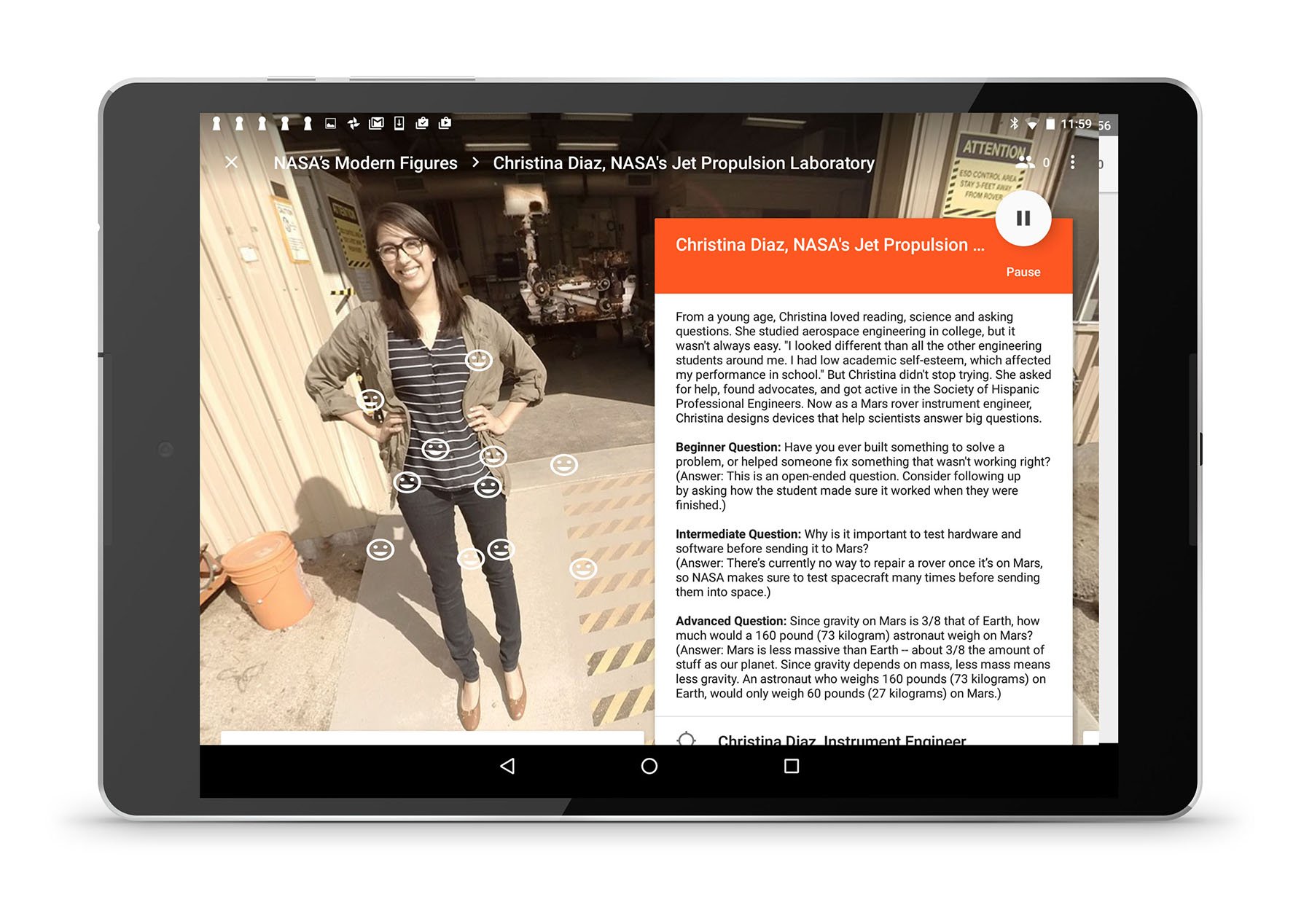
YouTube is also working to turn up the volume on inspirational women’s voices through the #HerVoiceIsMyVoice campaign. We hope you’ll join by sharing a video of a woman whose voice speaks to you.
Tracking screen time
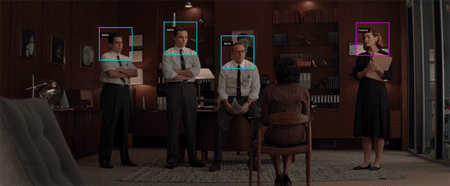
Media can play a huge part in empowering women to discover new careers, but often the characters we see on screen aren’t very diverse. Recently, our machine learning team worked with the Geena Davis Institute on Gender in Media and USC Viterbi School of Engineering to develop a new tool that uses machine learning to measure how often we see and hear women on screen. We then put the software to work, analyzing the 100 highest-grossing live-action films from the past three years. The tool revealed that men are seen and heard nearly twice as often as women. In Academy Award-winning films, women make up just 32 percent of screen time and 27 percent of speaking time. In a world where girls are only half as likely as boys to have CS role models, representation matters. Over time, we hope this project can help raise awareness of the “missing women” in media, encourage filmmakers to include a broader range of characters, and introduce young people to more diverse role models.
Coming together in the community
We’re also participating in or hosting dozens of events supporting women at Google and in tech. Last weekend we held the first of many Women Techmakers summits, which offer hands-on coding workshops on TensorFlow, networking opportunities and inspiring speakers. Women Techmakers is also sponsoring more than 140 community meetups for women in tech worldwide. Many of our 120 Women@Google employee resource group chapters are hosting events—from career development workshops to civic action weeks—in cities around the world. And at our Cloud Next event headed by Diane Greene, SVP of Google Cloud, we’ll feature women leaders from Google and partners in aThe She Word: spotlighting women Googlers
There are thousands of powerful, dynamic and creative women at Google. This month, you can get to know some of them right here on the Keyword and our Instagram account, starting with Alexandrina Garcia-verdin, whose personal hero is Frida Kahlo, and Tea Uglow, who loves coffee (but not tea).
These are just a few of the women who inspire us. We hope you’ll share some of your own. Whether it’s empowering female voices as part of #HerVoiceIsMyVoice, or telling your personal story with #TodayIAm, we’re excited to hear it.Source: The Official Google Blog
Who run the world? How we’re celebrating International Women’s Day
Lee Tai-Young was Korea's first female lawyer and first female judge. Cecilia Grierson was the first woman to receive a medical degree in Argentina. And Ida B. Wells was a newspaper editor by age 25 and one of the founders of the NAACP. These are a few of the remarkable women you’ll meet in today’s Doodle celebrating International Women’s Day, one of several ways we’re raising awareness about the contributions of women, past and present, throughout Women’s History Month. We’re also supporting efforts to close the gender gap in tech and other fields. Read on for a look at what we’re doing to recognize women across media, culture, leadership and more this month.
Celebrating historical heroines
In today’s interactive slideshow Doodle, a young girl goes on an imaginary journey to meet 13 female trailblazers from throughout history. From a pilot in Egypt to a dancer in India, these women may not all be household names, but they’ve all made a unique mark on the world. In fact, all of them have been celebrated in a Doodle in the past, but often only in their countries of origin. Today, we’re sharing their stories worldwide.

After your journey, learn more about all of the women in the Doodle in a new Spotlight Story from Google Arts & Culture. See the São Paulo Museum of Art, designed by Brazilian architect Lina Bo Bardi, or the Phoenician alphabet tablet with which Halet Cambel deciphered Hittite hieroglyphics. You can also find more exhibits on notable women from throughout history on our Women in Culture page. You might just meet a new heroine!
A day in the life of women astronauts, pilots and engineers with VR
Today’s Doodle introduces you to notable women of the past, but what about the women of today and tomorrow? With Expeditions, more than 2 million students have gone on 500+ virtual field trips to places like Machu Picchu and the International Space Station using Google Cardboard. Today we’re adding 40 new Expeditions to this collection, all focused on on the careers, adventures, and contributions of women.

The new Expeditions highlight everyone from astronauts, airplane pilots, engineers and photographers to the female firefighters of the FDNY. They open a window into a typical day on the job—whether in a recording studio or a cockpit, explain the person’s backstory and reveal how she got to where she is today. Some also offer advice to students interested in pursuing a similar career. Download the app on iOS and Android to get started.
Recognizing inspirational women on YouTube
Rosie Rios, an inspiring woman in her own right as the 43rd Treasurer of the United States, led the efforts to put a woman on U.S. currency. That meant learning more about the hundreds of American women who made great contributions to the history of this country. Now she’s created a special playlist for YouTube Kids called “Super Women of Our Past” that introduces young people to some of these women, from Eleanor Roosevelt to Harriet Tubman to Grace Hopper. Watch with the YouTube Kids app. You can also find other, related playlists, like “Celebrate Women’s History Month” and “Celebrate International Women’s Day.”
YouTube is also working to turn up the volume on inspirational women’s voices through the #HerVoiceIsMyVoice campaign. We hope you’ll join by sharing a video of a woman whose voice speaks to you.
Tracking screen time

Media can play a huge part in empowering women to discover new careers, but often the characters we see on screen aren’t very diverse. Recently, our machine learning team worked with the Geena Davis Institute on Gender in Media and USC Viterbi School of Engineering to develop a new tool that uses machine learning to measure how often we see and hear women on screen. We then put the software to work, analyzing the 100 highest-grossing live-action films from the past three years. The tool revealed that men are seen and heard nearly twice as often as women. In Academy Award-winning films, women make up just 32 percent of screen time and 27 percent of speaking time. In a world where girls are only half as likely as boys to have CS role models, representation matters. Over time, we hope this project can help raise awareness of the “missing women” in media, encourage filmmakers to include a broader range of characters, and introduce young people to more diverse role models.
Coming together in the community
We’re also participating in or hosting dozens of events supporting women at Google and in tech. Last weekend we held the first of many Women Techmakers summits, which offer hands-on coding workshops on TensorFlow, networking opportunities and inspiring speakers. Women Techmakers is also sponsoring more than 140 community meetups for women in tech worldwide. Many of our 120 Women@Google employee resource group chapters are hosting events—from career development workshops to civic action weeks—in cities around the world. And at our Cloud Next event headed by Diane Greene, SVP of Google Cloud, we’ll feature women leaders from Google and partners in aThe She Word: spotlighting women Googlers
There are thousands of powerful, dynamic and creative women at Google. This month, you can get to know some of them right here on the Keyword and our Instagram account, starting with Alexandrina Garcia-verdin, whose personal hero is Frida Kahlo, and Tea Uglow, who loves coffee (but not tea).
These are just a few of the women who inspire us. We hope you’ll share some of your own. Whether it’s empowering female voices as part of #HerVoiceIsMyVoice, or telling your personal story with #TodayIAm, we’re excited to hear it.Source: The Official Google Blog
The She Word: Tea Uglow, a “pebble in the landslide”
In honor of Women’s History Month, we’re celebrating the powerful, dynamic and creative women of Google. Like generations before them, these women break down barriers and defy expectations at work and in their communities. Over the course of the month, we’ll help you get to know a few of these Google women, and share a bit about who they are and why they inspire us.
In our second installment of the “She Word” series, we hear from Tea Uglow, a creative director in Sydney, Australia who is known for her love of coffee (but not tea), and for grabbing a “quick flat white and a chat.”
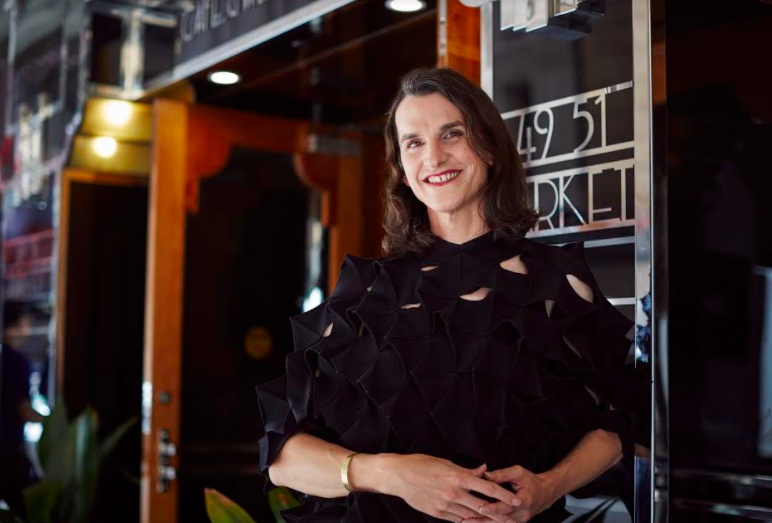
You’re at a dinner party and someone asks what you do. How do you explain your job to them?
Ha! I just do it really badly. I am part of Google’s Creative Lab, a team of designers, writers, developers and filmmakers who combine tech and art to tell interesting stories about Google. We’re the types of people who constantly think about how to push ourselves beyond the notion what is possible and practical. We create unconventional projects to connect technology to culture, and shape new perspectives of Google’s brand.Why are you proud to be a woman at Google?
Mainly because Google is proud of its women. Our commitment to equality and diversity has been persistent and committed. Most of all I feel proud to be a woman at Google because of the respect and understanding I've received since I came out as transgender, and during my transition.What’s your favorite thing to do outside of work?
I quite like doing nothing. I think it is a massively underrated pastime. I also like to potter and/or pootle.What do you hope to accomplish on behalf of
women everywhere?
To be a pebble in the landslide. (A pebble with demonstrable impact and effectiveness).If you could take a selfie with anyone, who would it be?
I would totally selfie with Hilary Mantel or Neal Stephenson, two of my favorite writers.What advice would you give to women starting out in
their careers?
My advice, that I give again and again, is that working hard and doing brilliant work are essential to win credits, but to turn credits into points you will have to have difficult conversations and negotiate. And don’t think that you are being pushy or demanding when you do. Source: The Official Google Blog
The She Word: Googler Alexandrina Garcia-Verdin and her “tribe of women”
In honor of Women’s History Month, we’re celebrating the powerful, dynamic and creative women of Google. Like generations before them, these women break down barriers and defy expectations at work and in their communities. Over the course of the month, we’ll help you get to know a few of these Google women, and share a bit about who they are and why they inspire us.
First up in our “She Word” series, we’ll hear from Alexandrina Garcia-Verdin (nickname: AGV), a Customer Engineer on the Google Cloud team.
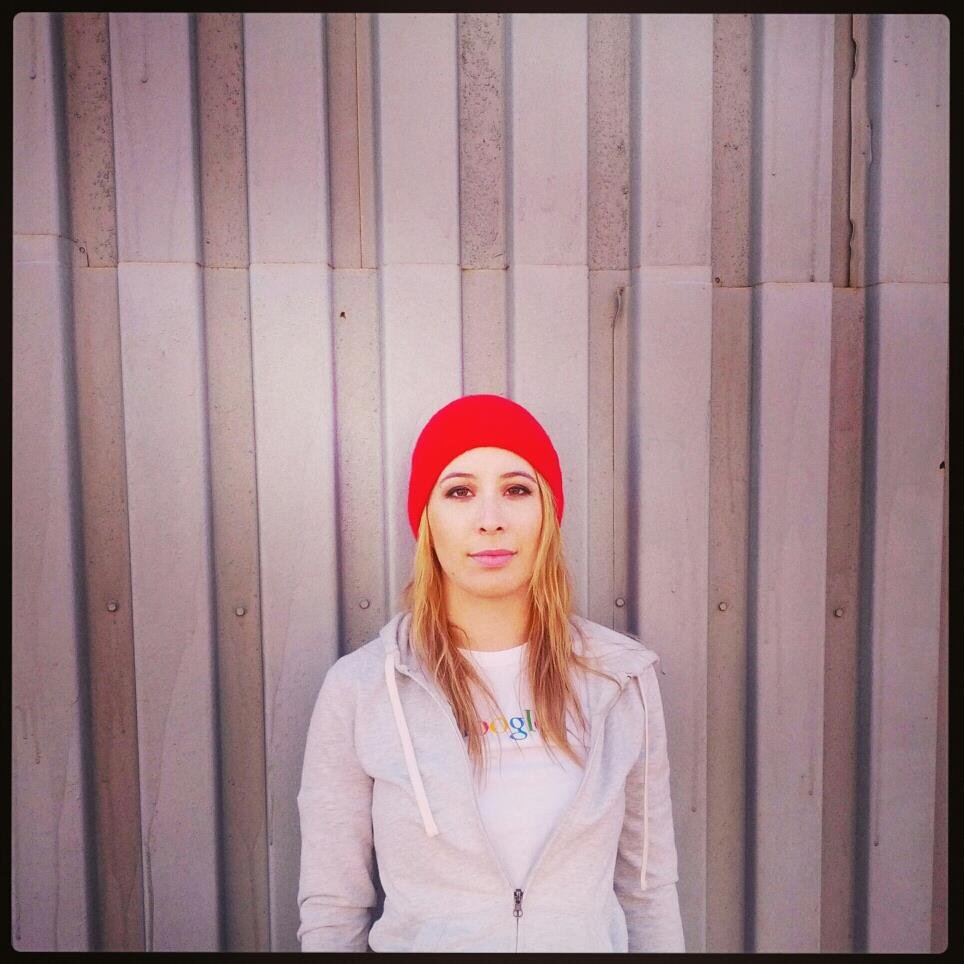
You’re at a dinner party and someone asks what you do. How do you explain your job to them?
I advise small and medium-sized businesses in Latin America and in the U.S. on how to use Google tools to run their business at the lowest cost and highest efficiency. This could mean teaching mom-n-pop organizations why it’s important to have a domain and a website, showing them how to manage inventory using spreadsheets, or helping them improve processes using Google tools (like collecting data using Forms instead of by paper or email).
What makes you proud to be a woman at Google?
I am building a tribe of women who question gender roles, are curious to explore their purpose and what they can offer their community, and have causes that they are passionate about (two of mine are education and how food affects health and disease). I have found this tribe at Google, a company that is full of innovative and self-aware women, and I feel very proud to be surrounded by these women who inspire me.
If you could ask one woman from history a question, who would it be and what would you ask?
My question would be for my personal hero, Mexican revolutionary and painter Frida Kahlo: “You lived during a time when gender roles, racism and social strife were deeply entrenched in your native Mexico. In spite of that, you wore beautiful ornate clothing, you were a political activist and had an open sexuality. What things did you focus on to live your personal truth in such an authentic manner?”
What advice would you give to women starting out in
their careers?
I have two. One—when setting goals, ask yourself “how can I provide value?” Starting with this question will naturally promote growth both for you and your organization. Two—always ask yourself “how will I measure my impact?” The human mind tends to forget past initiatives quickly, and research has shown that women aren’t as vocal about our merits as our male counterparts. So measuring success (and sharing that success frequently) will help prove your worth.
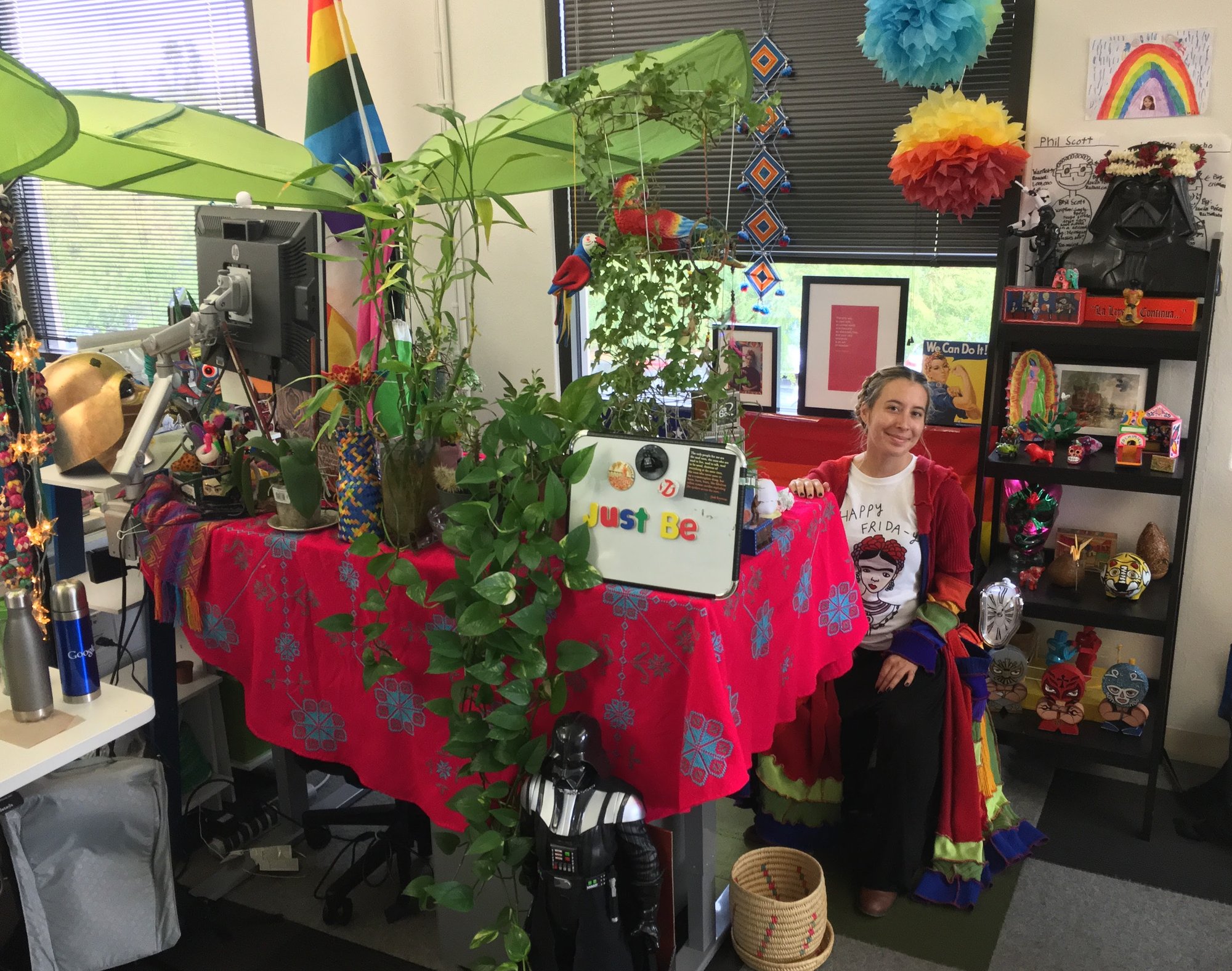
Are you doing anything special (in or outside of work) to celebrate Women's History Month?
I plan to celebrate women all year long! Back in January, I was proud to participate in the Women’s March in San Francisco (my best friend Cassady Fendlay co-directed the March in Washington). I was extremely moved by how women from all walks of life joined together as a united force of positive change and celebrated their differences. Since then I’ve set the intention to carry this sentiment throughout the year, and keep the conversation going with other women.
How do you spend most of your time outside of work?
I volunteer at a no-kill animal shelter in Oakland, CA and do pro bono work for nonprofits, training them how to use Google tools. I also attend Spanglish poetry and social justice art events in the Bay Area to in support of low-income people who have been evicted from their homes.
What’s the last book you read or show you binged?
I’m reading “Race Talk and the Conspiracy of Silence,” which talks about how most people avoid talking about race because those conversations can be uncomfortable. Race and diversity are important to me, and I believe it is my duty to educate myself on the systems of oppression propagate over generations. The only way we will break them is to have open and safe dialogues.
Source: The Official Google Blog
The She Word: Googler Alexandrina Garcia-Verdin and her “tribe of women”
In honor of Women’s History Month, we’re celebrating the powerful, dynamic and creative women of Google. Like generations before them, these women break down barriers and defy expectations at work and in their communities. Over the course of the month, we’ll help you get to know a few of these Google women, and share a bit about who they are and why they inspire us.
First up in our “She Word” series, we’ll hear from Alexandrina Garcia-Verdin (nickname: AGV), a Customer Engineer on the Google Cloud team.

You’re at a dinner party and someone asks what you do. How do you explain your job to them?
I advise small and medium-sized businesses in Latin America and in the U.S. on how to use Google tools to run their business at the lowest cost and highest efficiency. This could mean teaching mom-n-pop organizations why it’s important to have a domain and a website, showing them how to manage inventory using spreadsheets, or helping them improve processes using Google tools (like collecting data using Forms instead of by paper or email).
What makes you proud to be a woman at Google?
I am building a tribe of women who question gender roles, are curious to explore their purpose and what they can offer their community, and have causes that they are passionate about (two of mine are education and how food affects health and disease). I have found this tribe at Google, a company that is full of innovative and self-aware women, and I feel very proud to be surrounded by these women who inspire me.
If you could ask one woman from history a question, who would it be and what would you ask?
My question would be for my personal hero, Mexican revolutionary and painter Frida Kahlo: “You lived during a time when gender roles, racism and social strife were deeply entrenched in your native Mexico. In spite of that, you wore beautiful ornate clothing, you were a political activist and had an open sexuality. What things did you focus on to live your personal truth in such an authentic manner?”
What advice would you give to women starting out in
their careers?
I have two. One—when setting goals, ask yourself “how can I provide value?” Starting with this question will naturally promote growth both for you and your organization. Two—always ask yourself “how will I measure my impact?” The human mind tends to forget past initiatives quickly, and research has shown that women aren’t as vocal about our merits as our male counterparts. So measuring success (and sharing that success frequently) will help prove your worth.

Are you doing anything special (in or outside of work) to celebrate Women's History Month?
I plan to celebrate women all year long! Back in January, I was proud to participate in the Women’s March in San Francisco (my best friend Cassady Fendlay co-directed the March in Washington). I was extremely moved by how women from all walks of life joined together as a united force of positive change and celebrated their differences. Since then I’ve set the intention to carry this sentiment throughout the year, and keep the conversation going with other women.
How do you spend most of your time outside of work?
I volunteer at a no-kill animal shelter in Oakland, CA and do pro bono work for nonprofits, training them how to use Google tools. I also attend Spanglish poetry and social justice art events in the Bay Area to in support of low-income people who have been evicted from their homes.
What’s the last book you read or show you binged?
I’m reading “Race Talk and the Conspiracy of Silence,” which talks about how most people avoid talking about race because those conversations can be uncomfortable. Race and diversity are important to me, and I believe it is my duty to educate myself on the systems of oppression propagate over generations. The only way we will break them is to have open and safe dialogues.
Source: The Official Google Blog
New research explores unconscious bias in the classroom
Although we often believe we act without bias or stereotyping, we’re all subject to unconscious biases: automatic, mental shortcuts we use to process information and make decisions quickly. These shortcuts are useful, but can also subtly and negatively influence our actions. And in the classroom, they can have serious consequences—educators could unintentionally discriminate against some of their students, discouraging them from pursuing certain fields of study.
Our latest research, done in partnership with Thomas Dee of Stanford University and Seth Gershenson from American University, found evidence of unconscious bias at play in classrooms. One study showed that when white and Black teachers evaluated the same Black student, white teachers were significantly more likely to perceive the Black student as disruptive, inattentive, and less likely to complete homework. Another study found that teachers perceived preschoolers’ misbehavior as worse when observing students of a race different than their own. At the college-level, one study showed that when female college students have a female math or science professor, they perform better in those classes and are more likely to engage with STEM (science, technology, engineering and math) subjects in the future.
To better understand this complex problem and how we might address it, we’re investing in two new research projects at University of California Berkeley and Massachusetts Institute of Technology. These projects will place an emphasis on the effects of teacher biases in computer science and STEM fields, where the underrepresentation of female, Black and Hispanic students is a longstanding concern.
At University of California Berkeley, Professor Jason Okonofua and his team of researchers want to know if teachers can become more empathetic when disciplining students. They hypothesize that helping teachers better understand the thoughts and feelings of their students will lead to a more fair and equal approach to disciplining students. The UC Berkeley researchers will develop and test an exercise to foster empathy among K-12 teachers at over 20 schools.
At Massachusetts Institute of Technology, Justin Reich and a team of researchers will simulate tough classroom situations to help teachers reflect, learn, and improve their practice. Example situations include one student dominating others during group work, putting his or her head down on the desk during a lab assignment, or taking out a cell phone during class. Each simulation culminates in a “volatile moment of instruction” to which the teacher must respond. The demographics of the students will be randomized to help teachers identify and observe where their unconscious biases might be influencing their responses.
Over the next two years, we will learn from these experiments, figure out what works, and share these findings with the education community. By focusing on educators, we can help them become aware of their unconscious biases and learn how they can adjust their actions to support diverse students in computer science and STEM. In the long run, we hope this research will create equality of opportunity for all students regardless of socioeconomic and demographic backgrounds.
To learn more about Google's Computer Science Education Research, please visit g.co/cseduresearch.
Source: The Official Google Blog
New research explores unconscious bias in the classroom
Although we often believe we act without bias or stereotyping, we’re all subject to unconscious biases: automatic, mental shortcuts we use to process information and make decisions quickly. These shortcuts are useful, but can also subtly and negatively influence our actions. And in the classroom, they can have serious consequences—educators could unintentionally discriminate against some of their students, discouraging them from pursuing certain fields of study.
Our latest research, done in partnership with Thomas Dee of Stanford University and Seth Gershenson from American University, found evidence of unconscious bias at play in classrooms. One study showed that when white and Black teachers evaluated the same Black student, white teachers were significantly more likely to perceive the Black student as disruptive, inattentive, and less likely to complete homework. Another study found that teachers perceived preschoolers’ misbehavior as worse when observing students of a race different than their own. At the college-level, one study showed that when female college students have a female math or science professor, they perform better in those classes and are more likely to engage with STEM (science, technology, engineering and math) subjects in the future.
To better understand this complex problem and how we might address it, we’re investing in two new research projects at University of California Berkeley and Massachusetts Institute of Technology. These projects will place an emphasis on the effects of teacher biases in computer science and STEM fields, where the underrepresentation of female, Black and Hispanic students is a longstanding concern.
At University of California Berkeley, Professor Jason Okonofua and his team of researchers want to know if teachers can become more empathetic when disciplining students. They hypothesize that helping teachers better understand the thoughts and feelings of their students will lead to a more fair and equal approach to disciplining students. The UC Berkeley researchers will develop and test an exercise to foster empathy among K-12 teachers at over 20 schools.
At Massachusetts Institute of Technology, Justin Reich and a team of researchers will simulate tough classroom situations to help teachers reflect, learn, and improve their practice. Example situations include one student dominating others during group work, putting his or her head down on the desk during a lab assignment, or taking out a cell phone during class. Each simulation culminates in a “volatile moment of instruction” to which the teacher must respond. The demographics of the students will be randomized to help teachers identify and observe where their unconscious biases might be influencing their responses.
Over the next two years, we will learn from these experiments, figure out what works, and share these findings with the education community. By focusing on educators, we can help them become aware of their unconscious biases and learn how they can adjust their actions to support diverse students in computer science and STEM. In the long run, we hope this research will create equality of opportunity for all students regardless of socioeconomic and demographic backgrounds.
To learn more about Google's Computer Science Education Research, please visit g.co/cseduresearch.
Source: The Official Google Blog
Bringing the We Love You Project to Google Arts & Culture
Editor’s Note: Today we're launching a new exhibit in Google Arts & Culture featuring the work of photographer Bryon Summers. We've invited Summers to share more about the We Love You Project in this post.
In 2016 I set out to create 1,000+ portraits of Black men of all ages.
From the moment we’re born, Black boys are bombarded with images that strip us of our humanity. We see Black bodies cast as criminals and predators, implicitly urging viewers of all stripes to believe these characterizations as unwavering truths of Black male identity. What we don’t see are the smiling, reassuring, loving faces of our sons, brothers, cousins, husbands and fathers. With the We Love You Project, I wanted to show that even though we may feel as if our bodies are under attack, we’re still part of a larger community that loves and supports us.
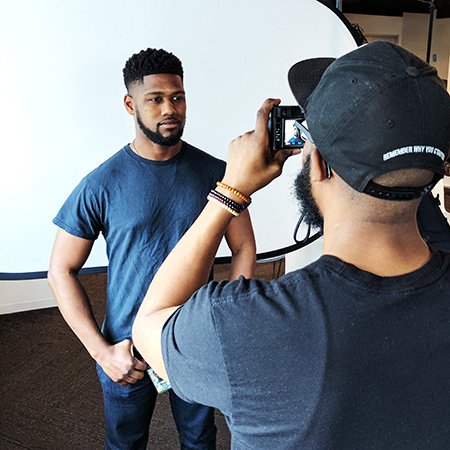
The We Love You Project has now surpassed 500 participants, and the groundswell of support and joyful participation from Black men across the country has been one of the most powerful experiences of my artistic career. As we continue to photograph Black men and boys, we want to ensure that our work continues to be seen and drives meaningful conversations about many Black men’s experiences in America. This is why we’ve partnered with Google Arts & Culture to create a digital gallery of more than 500 portraits from the series.
Google also invited us to photograph Black Googlers at its Mountain View headquarters—another huge turning point for the project. Not only is Google helping us reach our goal of 1,000 portraits, the company's participation reflects its commitment to diversity and to being an ally of the Black community.
We Love You lets viewers connect with Black men candidly and up close—in moments of vulnerability as well as levity. The photos reveal not just who we are now, but who we’ve been in the past and who we aspire to be tomorrow. Above all, the project convinces me of the great possibilities ahead, not just for Black men, but for all people. A thousand is only the beginning.
Source: The Official Google Blog
Bringing the We Love You Project to Google Arts & Culture
Editor’s Note: Today we're launching a new exhibit in Google Arts & Culture featuring the work of photographer Bryon Summers. We've invited Summers to share more about the We Love You Project in this post.
In 2016 I set out to create 1,000+ portraits of Black men of all ages.
From the moment we’re born, Black boys are bombarded with images that strip us of our humanity. We see Black bodies cast as criminals and predators, implicitly urging viewers of all stripes to believe these characterizations as unwavering truths of Black male identity. What we don’t see are the smiling, reassuring, loving faces of our sons, brothers, cousins, husbands and fathers. With the We Love You Project, I wanted to show that even though we may feel as if our bodies are under attack, we’re still part of a larger community that loves and supports us.

The We Love You Project has now surpassed 500 participants, and the groundswell of support and joyful participation from Black men across the country has been one of the most powerful experiences of my artistic career. As we continue to photograph Black men and boys, we want to ensure that our work continues to be seen and drives meaningful conversations about many Black men’s experiences in America. This is why we’ve partnered with Google Arts & Culture to create a digital gallery of more than 500 portraits from the series.
Google also invited us to photograph Black Googlers at its Mountain View headquarters—another huge turning point for the project. Not only is Google helping us reach our goal of 1,000 portraits, the company's participation reflects its commitment to diversity and to being an ally of the Black community.
We Love You lets viewers connect with Black men candidly and up close—in moments of vulnerability as well as levity. The photos reveal not just who we are now, but who we’ve been in the past and who we aspire to be tomorrow. Above all, the project convinces me of the great possibilities ahead, not just for Black men, but for all people. A thousand is only the beginning.
Source: The Official Google Blog
Bringing the We Love You Project to Google Arts & Culture
Editor’s Note: Today we're launching a new exhibit in Google Arts & Culture featuring the work of photographer Bryon Summers. We've invited Summers to share more about the We Love You Project in this post.
In 2016 I set out to create 1,000+ portraits of Black men of all ages.
From the moment we’re born, Black boys are bombarded with images that strip us of our humanity. We see Black bodies cast as criminals and predators, implicitly urging viewers of all stripes to believe these characterizations as unwavering truths of Black male identity. What we don’t see are the smiling, reassuring, loving faces of our sons, brothers, cousins, husbands and fathers. With the We Love You Project, I wanted to show that even though we may feel as if our bodies are under attack, we’re still part of a larger community that loves and supports us.

The We Love You Project has now surpassed 500 participants, and the groundswell of support and joyful participation from Black men across the country has been one of the most powerful experiences of my artistic career. As we continue to photograph Black men and boys, we want to ensure that our work continues to be seen and drives meaningful conversations about many Black men’s experiences in America. This is why we’ve partnered with Google Arts & Culture to create a digital gallery of more than 500 portraits from the series.
Google also invited us to photograph Black Googlers at its Mountain View headquarters—another huge turning point for the project. Not only is Google helping us reach our goal of 1,000 portraits, the company's participation reflects its commitment to diversity and to being an ally of the Black community.
We Love You lets viewers connect with Black men candidly and up close—in moments of vulnerability as well as levity. The photos reveal not just who we are now, but who we’ve been in the past and who we aspire to be tomorrow. Above all, the project convinces me of the great possibilities ahead, not just for Black men, but for all people. A thousand is only the beginning.



